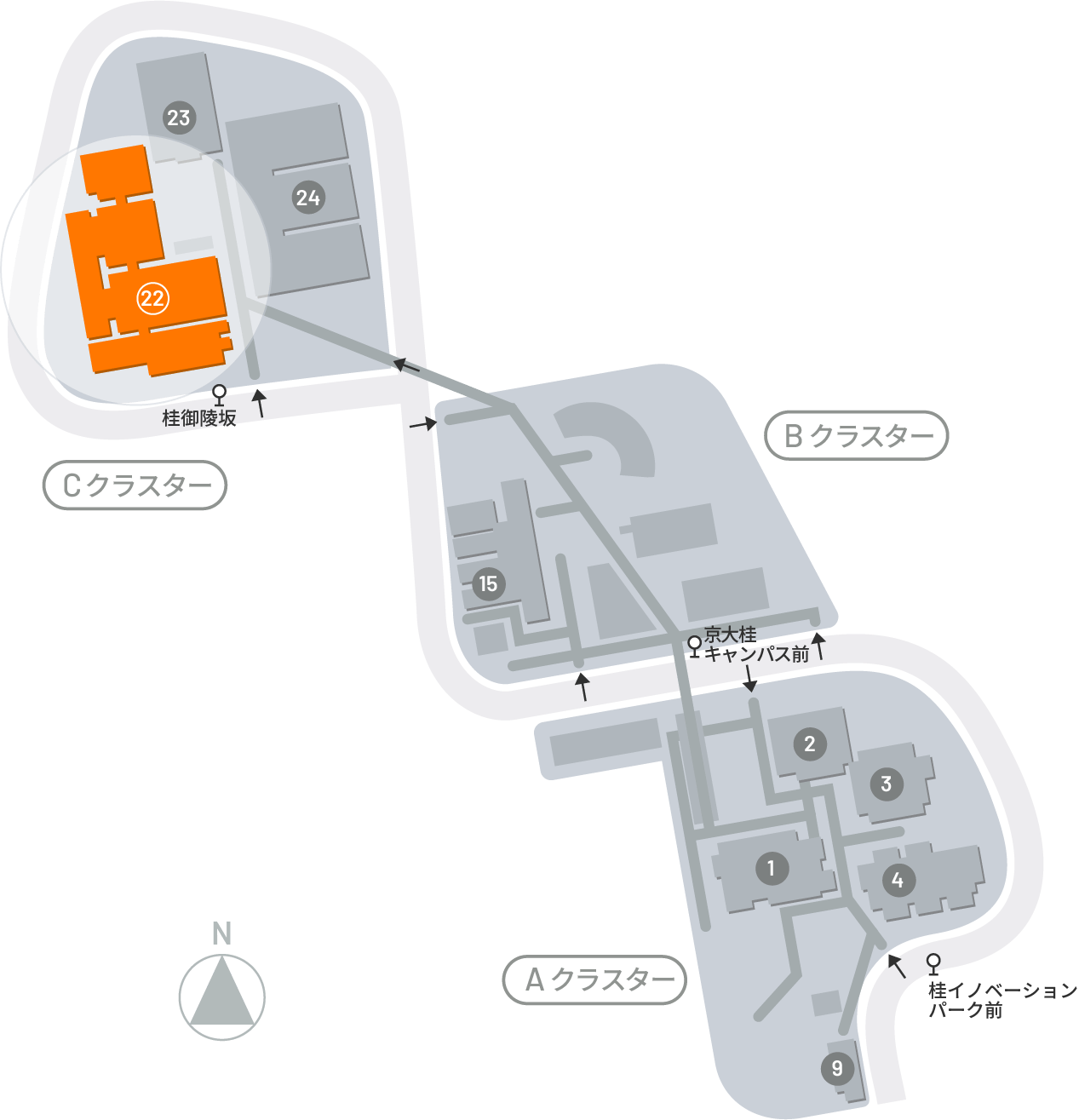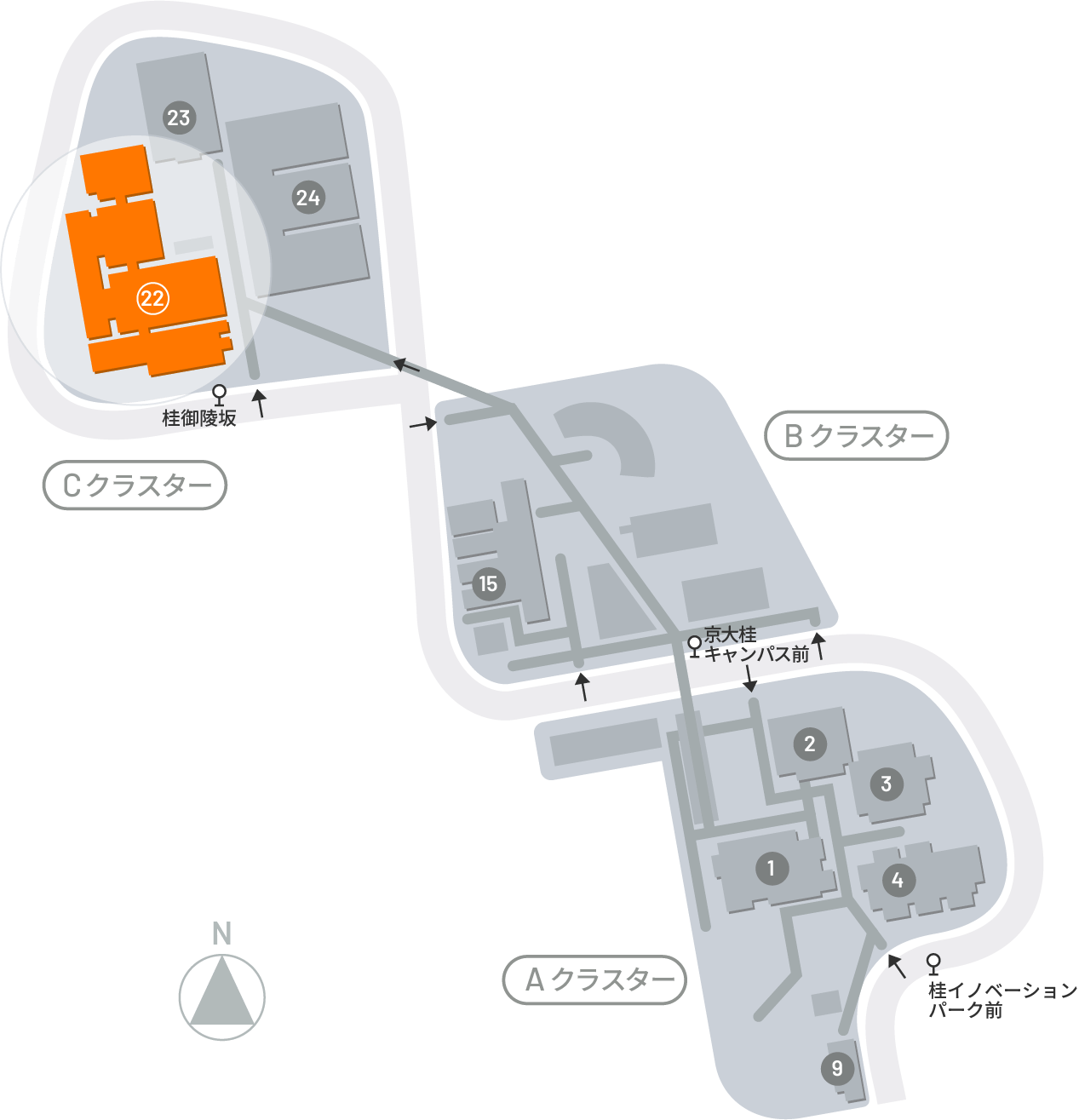6-axis control type driving simulator
A driving simulator is an experimental device used for simulated driving experiments, consisting of a computer graphics (CG) generator and a motion platform to provide subjects with acceleration and vibration sensations. It allows subjects to simulate driving in a virtual reality (VR) environment, and their driving behavior is recorded as data. The major challenges in road traffic, such as traffic accidents and congestion, ultimately come down to issues related to the cognitive, judgment, and operational aspects of drivers. Therefore, driving simulators that can observe subjects’ behavior safely in various road and traffic conditions are highly valuable in transportation engineering research.
The main measurable data in this driving simulator include vehicle position, angle, engine speed, gear position, speed, angular velocity, angular acceleration, steering angle, throttle position, brake position, distance from the start of the road, distance from the road/lane center, lane number, among others.
The driving simulator has the following features:
1) To observe driving operations such as lane changing, it ensures a 180-degree field of view on five 55-inch LED screens and is equipped with displays corresponding to rearview and side mirrors.
2) Users can easily set up roads themselves using the functionality of UC-win/Road.
3) The effectiveness of information provision from navigation systems can also be verified.
In recent years, the application of driving simulators has expanded beyond transportation engineering to interdisciplinary research. It has been used to observe and analyze drivers’ responses during earthquakes and torrential rainstorms, contributing to engineering research for disaster prevention and mitigation. The following are examples of research conducted using this simulator:
– Behavioral analysis of merging support information targeting different age groups on urban expressways.
– Analysis of the impact of implementing traffic safety measures on vehicle behavior in accident-prone sections of dedicated motorways.
– Analysis of vehicle behavior during red signal changes using driving simulators and information provision.
– Analysis of the influence of awareness of behavioral norms during earthquakes on vehicle speed through indoor experiments.
– Utilization of driving simulators in the evaluation of introducing speed bumps and simulated speed bumps as traffic safety measures on local roads.
– Research on the impact of transferring control from autonomous driving to drivers through simulated driving experiments.
Urban Management Department
(1) Individuals who belong to a department or the Social Infrastructure Engineering Program in the Graduate School of Engineering at Kyoto University (hereinafter referred to as “the university”).
(2) Faculty or students of Kyoto University who do not belong to the category mentioned in the previous item.
(3) Individuals affiliated with national or local government bodies, national university corporations or university joint-use institutions, independent administrative institutions, or corporations or organizations engaged in educational or research activities.
(4) Individuals engaged in research and development activities in companies or other organizations.
(5) Other individuals deemed appropriate by the responsible manager.
Users are expected to conduct the experiment by themselves after understanding the operating procedures through manuals or other instructions.
Urban Management Department
Geoinformatics Lab.
075-383-3299
http://www.gi.ce.t.kyoto-u.ac.jp/

